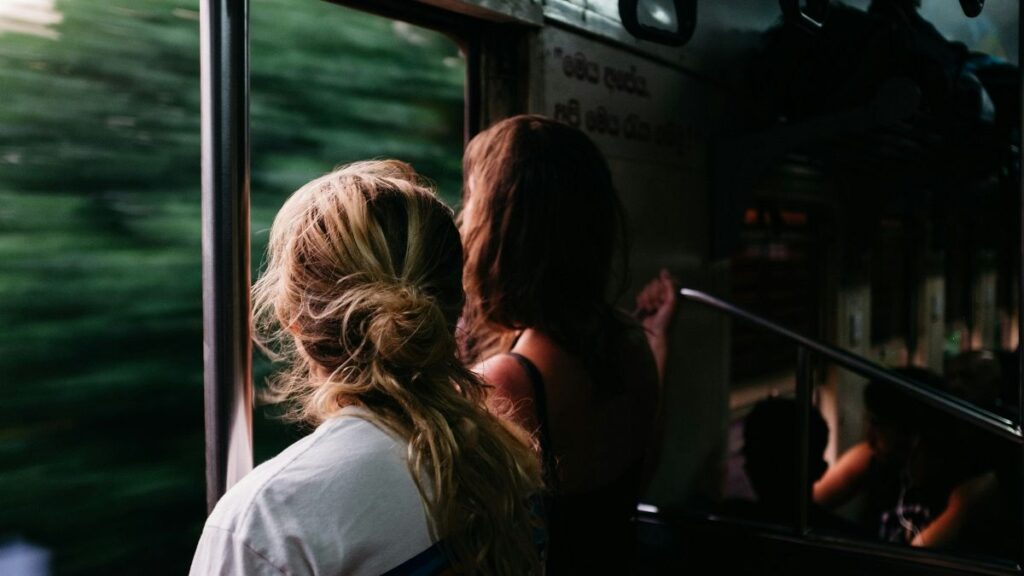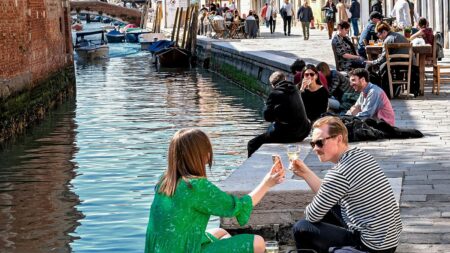While the prospect of travelling internationally via train might seem overwhelming, it doesn’t have to be.
As the days get ever longer and the mercury creeps up, many of us are thinking about summer travels.
With sustainability increasingly to the fore, train travel is becoming more popular.
Europe boasts one of the world’s best train networks and opens up destinations inaccessible by plane.
Interrailing around the continent has often been seen as the preserve of the young and those on a budget but now, with the rise of adult gap years and post-pandemic priority shifts, it’s an appealing prospect for many.
With the help of over 120,000 members of the Facebook community Interrail & Eurail Travelers, here are Euronews Travel’s top tips for making the most of the train trip of a lifetime.
What is the best way to book Interrail tickets?
The official Interrail website offers a wide variety of tickets under the umbrella of a ‘Global Pass’, meaning you can buy the one appropriate for the time you have and the amount of places you plan to cover.
They start at €212 for four days travel in one calendar month in second class and go up to €911 if you have three months to spare, plan to travel every day and won’t settle for anything but first class.
The Global Pass covers 33 countries and allows passengers to use any train within those nations. Seat reservation fees are not included in the cost but that doesn’t tend to be a problem on local or regional trains.
On most high-speed, international and night trains, Interrail does recommend booking seats as they fill up fast.
While planning to travel around several countries with different languages and cultures might seem overwhelming, Interrail’s own Rail Planner app comes highly recommended.
Use it to check train times and journey lengths to make the logistics of your trip easier..
Steve, a member of the Interrail & Eurail Travelers group, says it’s a necessity: “The Rail Planner app is more important than the clothes on your back.”
Other recommended route planning apps are Tripit, TrainLine and RailEurope, as well as Uber and Bolt which are increasingly venturing into public transport on top of taxis.
How – and what – to pack for a long journey with limited luggage
One thing the vast majority of people agree on is the importance of packing light.
“If [your bag] is too heavy/big to lift onto the luggage rack above your head, you are taking too much stuff.” That’s according to Robert, a member of the Facebook group – and it’s a sentiment shared by many who are old hands at interrailing.
Another group member, Lesley, says it’s absolutely crucial not to overpack in order to make the most of your holiday: “Travel light is my no 1 tip… the misery of lugging heavy cases around completely spoils the trip.”
While you might be the kind of person who is never photographed in the same outfit twice, an interrailing adventure is a good time to let loose and become an outfit repeater.
On Facebook, Judy recommends taking “enough clothes for a week and book[ing] somewhere with a washing machine [to stay].” While Vicky suggests taking “sports fabric style clothes/thin fleeces for layering up but that will also dry quickly if a) caught in the rain b) drying after washing.”
Making a list of absolute necessities is a good idea, especially as almost everything can be replaced with ease throughout Europe.
“Travel really, really light so you never need to use lockers or to return to a hotel to pick up your bag,” Jeroen, another group member, advises.
“Wandering through a foreign city with all your belongings in a small rucksack gives the ultimate feeling of travel freedom. So only pack stuff you are absolutely 100% sure you need, anything missing is easily purchased along the way.”
“And bring a spork,” he adds.
How to stay safe and secure while Interrailing
Pam, a veteran Interrailer, puts the experience best with this sentiment: “Be alert, but bear in mind that the vast majority of people are as lovely as you are.”
Although travelling by train in Europe is known to be relatively safe, there are always going to be a few bad apples, meaning that you should stay vigilant.
“Have a great time but use some common sense precautions,” Robert advises, “as in any place, be aware of who and what is around you.”
It’s wise to keep the most important belongings in a money belt or a small bag close to your body as well as keeping several copies of your passport in different parts of your luggage in case the original goes missing or is stolen.
Whether or not you heed our advice to keep your luggage light, one thing is crucial: don’t let it out of your sight.
If you’re travelling solo, Robert suggests using a flexi bike lock to lock your bag on the rack in case you need to visit the bathroom or cafe cart.
Power banks, plug converters and other essentials
These days, we are all attached to our smartphones and they are not just necessary for keeping in touch and taking photos, but work as an e-ticket for interrailing, too.
It’s a good idea, then, to bring rechargeable power banks with you as well as plug converters and extra charging leads.
On Facebook, Ian also suggests taking extension leads with USB chargers as it turns one travel plug into many and there are often few plug points onboard the trains.
The lack of plugs may not be the only issue you’ll stumble across on sometimes outdated trains – some don’t offer much in the way of food or drink options.
Anna, a group member, has a solution. “If you are doing a long journey, leave yourself enough time to get a hot meal at a station.”
Inger from the group recommends this approach too.
“Sometimes we went over 4 hours without a buffet car or time to find food at a station. Another time we were stuck on a train for 4 hours due to a fatality on the train ahead. Stuff happens,” she advises.
Top tips to save money on food and drink
No matter how much you budget for your Interrailing trip, it’s wise to factor in a little extra in case of unplanned changes.
Of course, if you can save money by making simple swaps, that can only be a good thing.
Judy recommends taking “an insulated water bottle and fill[ing] it up whenever you can as water can be expensive” and Pam takes it one step further, making sure to pack a travel kettle as well as clothes pegs.
Inger also recommends stowing away a “packet of biscuits or similar snack food” for emergencies and hunger pangs and, for the hot beverage lovers, fellow group member Kirsten has a great solution.
“Take a mini water heater and thermal cup so you can make tea and coffee on the train and in your accommodation,” she says. “I did 2 months around Europe without ever having to buy a takeaway cup of tea. It saves a lot of money as well as all those disposable cups being thrown away.”
How to make the most of destinations while Interrailing
When you arrive at your destination, there are savings to be made too.
Judy says free walking tours are “brilliant for seeing the main parts of a location in a few hours” and also recommends those holding a continuous pass with fewer limits on time to stay outside of major cities and tourist traps.
“[Do this] for better prices and a calmer place to stay,” she advises, “We stayed in Delft and Utrecht for example rather than expensive Amsterdam.”
Finances aside, not wasting time is also an issue which can be tackled fairly simply.
Judy says, “If you’re only staying one night in a location, book a hotel near the station so you don’t waste time getting to your accommodation” in order to maximise your stay, especially the shorter stop offs.”
Prepare for your trip so you can spend more time relaxing
All international travel has the potential to be stressful, not least because it’s impossible to stop various aspects of a trip from going wrong.
Even if you have prepared a perfectly timed schedule, it’s important to allow for hiccups in the agenda.
On the Facebook group, Matthew explains how he changed his mindset ahead of his interrailing holiday.
“My wife and I are control freaks and when the train we planned on taking is delayed or doesn’t have the car configuration we expected, it would freak us out. We embraced an attitude of [dog Latin phrase] “Semper Gumby”. It means “always flexible”,” he says.
“Be patient and allow yourself a flexible contingency or two just in case. You can totally ruin an otherwise awesome trip by freaking out,” Matthew adds.
Richard from the same group suggests something which might not occur to us in times of stress: asking for help.
“If your train is late and you risk missing a connection, always try to ask railway staff what to do 1) because they might say something useful but mainly 2) because if you need to apply for a refund, this is one of the questions you’ll be asked, “Did you ask staff for advice and what did they say?”
Rail workers are usually more than happy to assist despite any language barrier and will do their best to get you back on track. If not, we’d advise getting in touch with Interrail themselves or a local tourist office.
If you take only one piece of advice it is this: be flexible.
“Check the day before you travel that your train is still running. Much less stressful if you need a Plan B to have one in mind before you get to the station,” Pam recommends.
Interrailing is typically associated with backpackers and ‘going with the flow’ – if you can embrace that mentality, you might just have the best trip of your life.
Read the full article here











